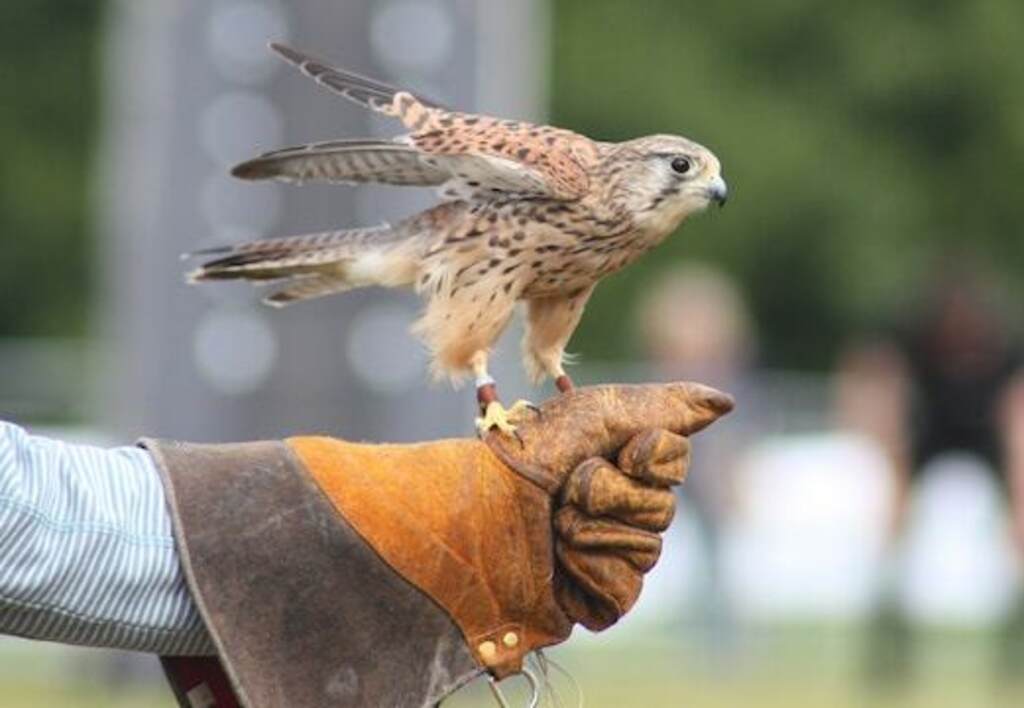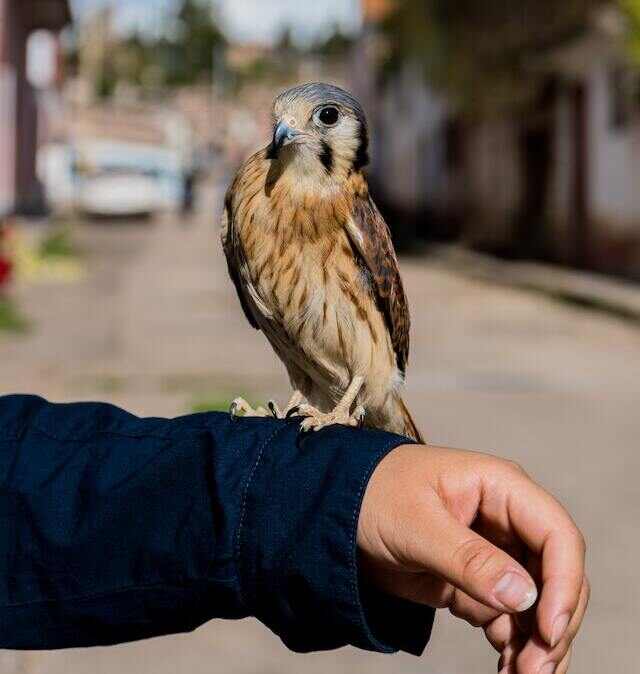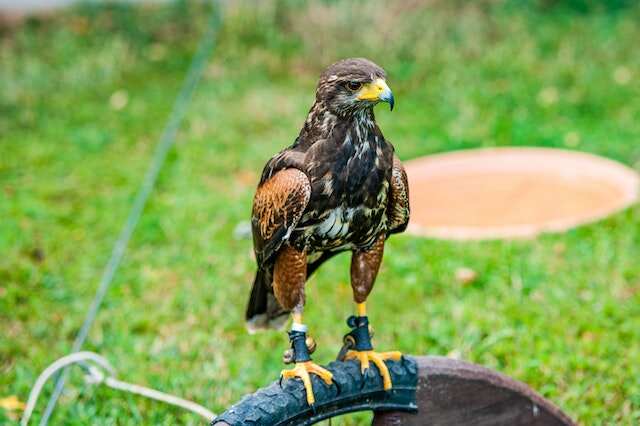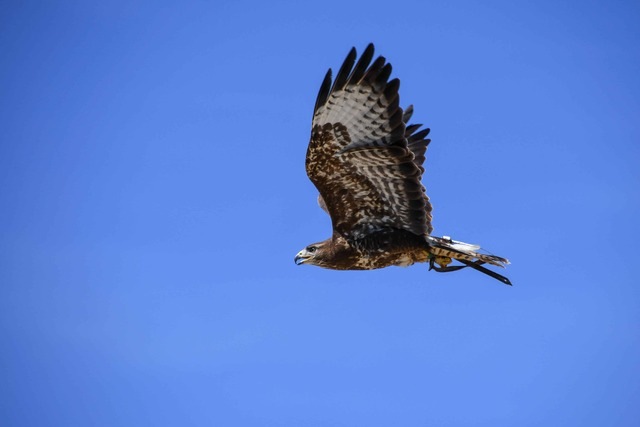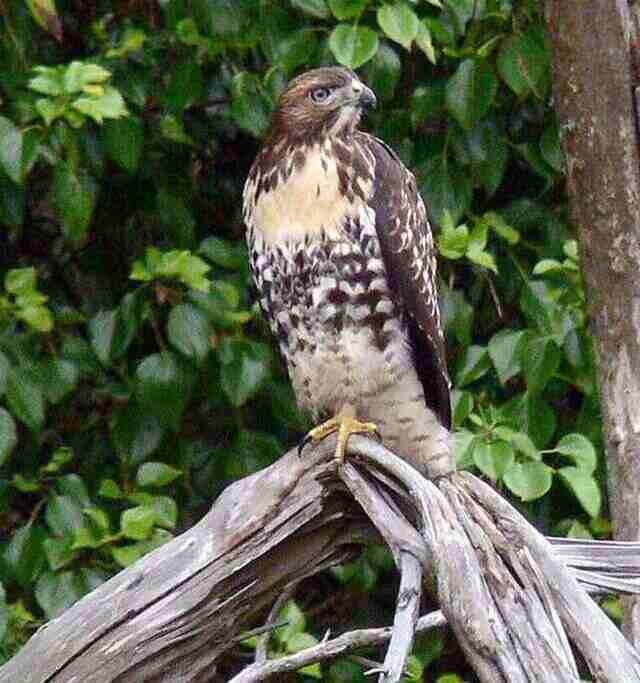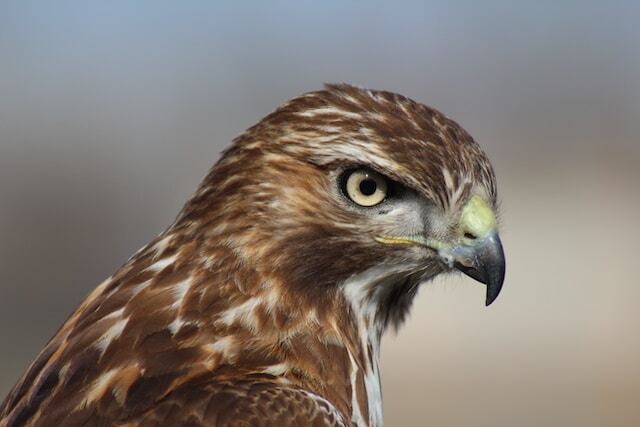Welcome, bird enthusiasts! Today, we embark on an intriguing quest: Do hawks bond with humans? The short answer: Yes! Hawks, those majestic symbols of strength and freedom, have captured our fascination for centuries.
But this journey goes beyond admiration. As we delve into the fascinating world of hawk-human relationships, we’ll explore their behavior, the concept of bonding, responsible training and handling practices, and the ethical implications of keeping these magnificent birds of prey.
Get ready for a thrilling dive into the captivating connections between hawks and humans, where trust and respect meet in the skies!
Table of Contents
- 1 Key Takeaways
- 2 Do Hawks Bond With Humans?
- 3 Overview of Hawks and their Behavior
- 4 The Concept of Bonding
- 5 Factors that Contribute to Bonding
- 6 Evidence of Bonding in Hawks
- 7 Ethical Implications of Keeping Birds of Prey
- 8 Responsible Training and Handling Practices
- 9 Challenges and Risks
- 10 Alternatives to Bonding
- 11 Conclusion and Takeaways
- 12 Frequently Asked Questions
- 12.1 What species of hawks are most commonly kept as pets?
- 12.2 How long does it take for a hawk to bond with a human?
- 12.3 Can a hawk be trained to hunt for its owner?
- 12.4 What are the legal requirements for owning a hawk as a pet?
- 12.5 What are some common mistakes that new hawk owners make during the bonding process?
- 13 Author
Key Takeaways
- Hawks can develop strong bonds with humans through early socialization and positive reinforcement techniques.
- Each hawk has a unique personality and temperament that must be taken into consideration during training and handling.
- Trust and communication are essential in developing any type of relationship with a wild animal, including hawks.
- Ethical concerns must be considered when keeping birds of prey in captivity, and alternatives should be explored.
Do Hawks Bond With Humans?
Hawks can form bonds with humans, although the extent varies. While they are wild animals, some hawks can develop trust and familiarity with humans through consistent interactions and positive reinforcement. Building a bond requires time, patience, and understanding of their natural instincts.
Overview of Hawks and their Behavior
An understanding of the behavior of hawks reveals their innate tendencies towards solitary hunting and territorial defense.
Hawks are known for their exceptional hunting skills, and they prefer to hunt alone rather than in groups.
Hawks in captivity also exhibit this behavior, and they can become aggressive towards other animals that enter their territory.
Interactions with other animals are limited to hunting or defending their territory.
However, it is important to note that hawks are not social birds, and they do not form bonds with other animals or humans.
The concept of bonding with hawks is a complex one, as it goes against their natural behavior.
The Concept of Bonding
Bonding is a process of forming a close emotional relationship between two or more individuals. It is a complex phenomenon that involves various factors such as trust, communication, and mutual understanding.
Examples of bonding can be seen in various social animals, including humans, where strong bonds are formed between family members, friends, and even between humans and animals.
Trust and effective communication are crucial elements that facilitate the bonding process, enabling individuals to develop a deeper connection based on shared experiences and emotions.
Definition and Examples
One way to explore the question of whether hawks bond with humans is to examine instances of interspecific relationships in the wild.
While hawks are not typically known for forming bonds with humans, there are examples of other birds of prey that have developed close relationships with humans, such as falcons used in falconry or eagles trained for wildlife rehabilitation.
These relationships often involve a complex interplay of bonding dynamics and human interaction, with birds becoming accustomed to human presence and responding to cues from their handlers.
However, it is important to note that these examples are the exception rather than the rule, and most hawks in the wild are not likely to form close bonds with humans.
Understanding the role of trust and communication is essential in developing any type of relationship with a wild animal, and further research is needed to fully understand the potential for interspecific bonding between hawks and humans.
The Role of Trust and Communication
Trust and communication play crucial roles in developing relationships with wild animals, such as hawks, and further research is needed to fully understand these dynamics.
Establishing boundaries and understanding the importance of body language are essential in building a connection with a hawk.
Trust is developed over time through consistent behavior and positive reinforcement, and communication can be established through body language cues and vocalization.
However, it is important to note that hawks are still wild animals and should be respected as such.
Factors that contribute to bonding with hawks go beyond trust and communication, and will be explored in the subsequent section.
Factors that Contribute to Bonding
Bonding between animals and humans is a complex process that involves various factors. Early socialization and training play a crucial role in establishing a strong bond between the two, as it helps animals develop a positive association with humans.
Consistent handling and positive reinforcement further reinforce this bond, as animals learn to trust and rely on their human companions.
Additionally, individual personality and temperament can also influence the bonding process, as some animals may be more receptive to human interaction than others.
Early Socialization and Training
Surprisingly, hawks can be trained to interact with humans from a very early age through socialization techniques that involve repetitive positive reinforcement.
Early socialization techniques are crucial in shaping the hawk’s behavior towards humans. It involves exposing the hawk to various stimuli like human voices, touch, and feeding.
This is done to familiarize the hawk with human presence and to reduce its fear towards humans.
The importance of positive reinforcement cannot be overstated in early socialization because it strengthens the hawk’s bond with humans.
Positive reinforcement involves rewarding the hawk for desirable behavior, and this encourages it to repeat the behavior.
Consistency is key in the early socialization process because it helps the hawk to learn faster.
With consistent handling and positive reinforcement, hawks can form strong bonds with humans that can last a lifetime.
Consistent Handling and Positive Reinforcement
Consistency in handling and positive reinforcement are essential factors in shaping the behavior of hawks towards human interaction, ultimately strengthening their bond.
Positive reinforcement techniques, such as rewarding desired behavior, can be used to encourage hawks to act in ways that are beneficial to human interaction.
Consistency in handling is also crucial, as hawks can become stressed or agitated if they are not handled correctly, which can negatively impact their bond with humans.
Training consistency, such as regularly scheduled training sessions, can also help strengthen the bond between hawks and humans.
By consistently reinforcing positive behaviors and handling hawks correctly, humans can establish a strong bond with these birds of prey.
As we move into the next topic, individual personality and temperament, it is important to note that while consistency and positive reinforcement are essential in building a bond with hawks, each bird has its unique personality and temperament, which should be taken into account during training and handling.
Individual Personality and Temperament
Understanding the individual personalities and temperaments of hawks is crucial in creating a successful and effective training program, as each bird has its unique characteristics and behaviors that must be taken into consideration.
For example, just as each human has their own personality traits, some hawks may be more assertive or independent, while others may be more timid or reliant on their human handlers.
These personality traits can affect their behavioral patterns, such as their response to training methods or their level of comfort around humans.
Therefore, it is important for handlers to take the time to observe and understand their hawk’s personality in order to tailor their training program to best suit their needs.
| Personality Traits | Behavioral Patterns |
|---|---|
| Assertiveness | Confident in hunting and defending territory |
| Independence | Prefers solitary hunting and exploration |
| Timidity | May exhibit cautious behavior in unfamiliar situations |
| Reliance | Demonstrates dependence on handler for food and care |
| Adaptability | Shows flexibility in adapting to different environments and prey |
Understanding these individual personalities and temperaments enables handlers to tailor their training approaches and develop a stronger bond with their hawk.
By recognizing and accommodating these traits, handlers can create a more successful and fulfilling training program for both the bird and themselves.
Evidence of Bonding in Hawks
Research suggests that there is evidence of strong bonding between hawks and humans. Behavioral cues such as vocalizations, body posture, and eye contact have been observed as indicators of a bond between hawks and their human handlers.
Studies have shown that hawks are capable of recognizing individual human faces, and they often display signs of affection towards their preferred handler.
In addition, hawks have been known to follow their human handlers, indicating a willingness to interact and engage with them.
Such interactions between hawks and humans can result in a unique and rewarding relationship, but it also raises ethical implications of keeping birds of prey in captivity.
Ethical Implications of Keeping Birds of Prey
The captivity of birds of prey raises ethical concerns regarding their welfare and the impact of human intervention on their natural behaviors and habitats.
While it is legal to keep birds of prey in captivity for certain purposes such as rehabilitation and educational programs, it is important to ensure that their welfare is not compromised.
Birds of prey have specific needs and require ample space, appropriate diet, and opportunities to express natural behaviors such as hunting and flying.
Keeping them in small enclosures or depriving them of these opportunities can lead to physical and psychological problems.
Therefore, animal welfare should be the primary concern when keeping birds of prey in captivity.
Additionally, legal regulations should be in place to ensure that their welfare is not compromised and that they are not taken from the wild illegally.
It is crucial to strike a balance between the benefits of keeping birds of prey in captivity and their welfare.
The subsequent section will discuss responsible training and handling practices that can help ensure the welfare of birds of prey in captivity.
Responsible Training and Handling Practices
Responsible training and handling practices are essential for ensuring the welfare of birds of prey in captivity. It is important for trainers and handlers to have patience and a deep understanding of bird behavior when working with these animals.
In captivity, birds of prey are often subjected to stressful environments that can cause physical and psychological harm.
Therefore, it is crucial for trainers to use positive reinforcement techniques that focus on the natural behaviors of the bird.
This includes providing proper housing, diet, and exercise to ensure the bird’s overall well-being.
Additionally, trainers must be aware of the potential risks associated with handling birds of prey, such as the risk of injury or escape.
By understanding the importance of responsible training and handling practices, trainers can create a safe and healthy environment for their birds of prey.
This will not only benefit the bird’s welfare, but also the relationship between the bird and handler.
In the next section, we will discuss the challenges and risks associated with keeping birds of prey.
Challenges and Risks
Responsible training and handling practices are crucial when it comes to bonding with hawks. However, even with the best intentions and practices, there are still potential risks and ethical considerations that need to be taken into account.
These challenges may include injury to the bird or handler, unintentional harm to other wildlife, and the potential for the hawk to become too dependent on humans, leading to a loss of its natural instincts.
To better understand these risks and considerations, let us take a closer look at a table that highlights the potential challenges and ethical considerations involved in bonding with hawks.
While bonding with hawks can be a rewarding experience, it is important to explore all alternatives before taking any steps further.
Alternatives to Bonding
Exploring alternative methods of interaction with birds of prey can provide fulfilling experiences for individuals seeking to learn about and appreciate these magnificent creatures.
There are several training methods that can be used to build a relationship with a hawk without bonding, such as free flight demonstrations, falconry displays, and educational programs.
These methods allow individuals to observe the behavior of the hawk in its natural habitat, while also learning about its biology and ecology.
Additionally, natural interactions with hawks can be achieved through bird watching, photography, and conservation efforts.
These activities allow individuals to appreciate the beauty and importance of hawks in the ecosystem without disrupting their natural behavior.
By exploring these alternatives, individuals can gain a deeper understanding and appreciation for hawks, while also respecting their freedom and independence.
Ultimately, these experiences can foster a sense of wonder and connection with these magnificent creatures.
Moving forward, it is important to consider these alternatives when seeking to interact with birds of prey in a respectful and responsible manner.
Conclusion and Takeaways
In conclusion, the importance of respecting the autonomy of birds of prey cannot be overstated, as their freedom is integral to their survival, much like the role of sunlight in the growth of plants.
While it may be tempting to seek an emotional connection or bond with a hawk, it is important to remember that these animals are wild and must be treated with the utmost respect.
Alternative methods of interacting with hawks, such as falconry or bird-watching, can still provide a fulfilling and respectful way to appreciate these magnificent creatures.
Trust and mutual respect are key components of any relationship, and it is no different with birds of prey.
By respecting their autonomy and building trust through proper training and care, a fulfilling and respectful relationship can be formed.
Frequently Asked Questions
What species of hawks are most commonly kept as pets?
The most commonly kept hawks as pets are Cooper’s Hawks and Red-tailed Hawks. Hawk behavior and training techniques vary depending on the species and individual characteristics.
It is important to note that hawks are not domesticated animals and require specialized care and attention.
How long does it take for a hawk to bond with a human?
Developing a bond between a hawk and a human requires patience and an understanding of hawk behavior. It can take several weeks or even months for a hawk to trust and form a connection with its handler.
Patience is crucial to building a strong bond, which can ultimately lead to successful training and a fulfilling relationship.
Can a hawk be trained to hunt for its owner?
Hawks can be trained to hunt for their owners through the use of various training techniques and falconry equipment. Successful training requires patience, consistency, and proper handling to ensure the hawk’s safety and success in hunting.
What are the legal requirements for owning a hawk as a pet?
In the United States, owning a hawk as a pet requires a federal permit, as well as compliance with state and local laws. Proper housing, training techniques, and a balanced diet are also necessary for ethical ownership.
What are some common mistakes that new hawk owners make during the bonding process?
Common bonding mistakes for new hawk owners include rushing the process, not providing enough training or socialization, and using punishment rather than positive reinforcement. Building trust requires patience, consistency, and understanding of the hawk’s behavior.

